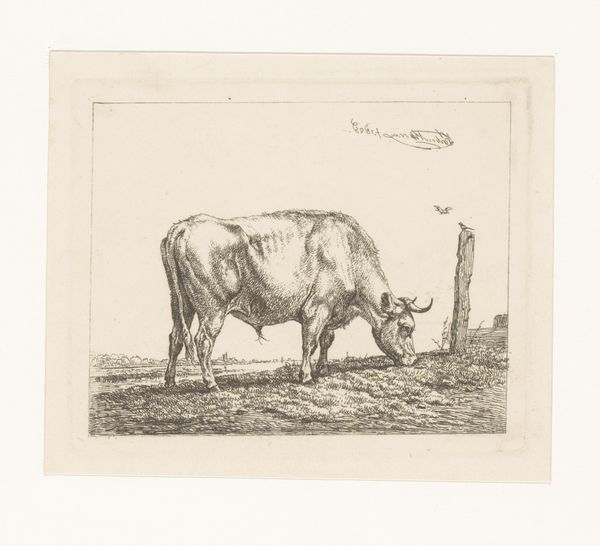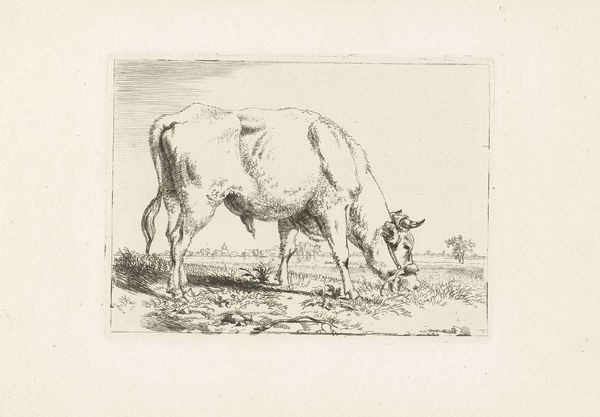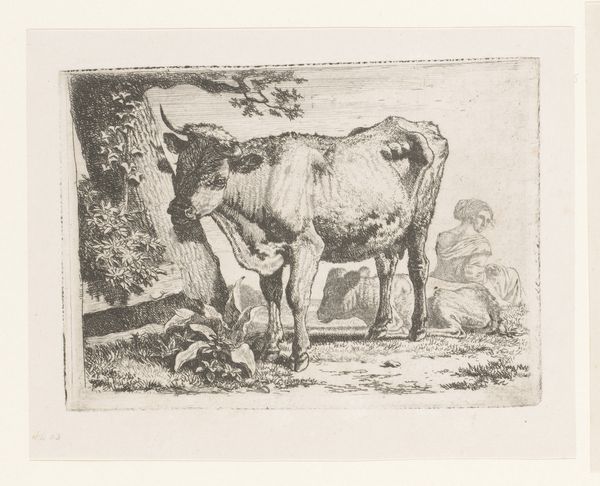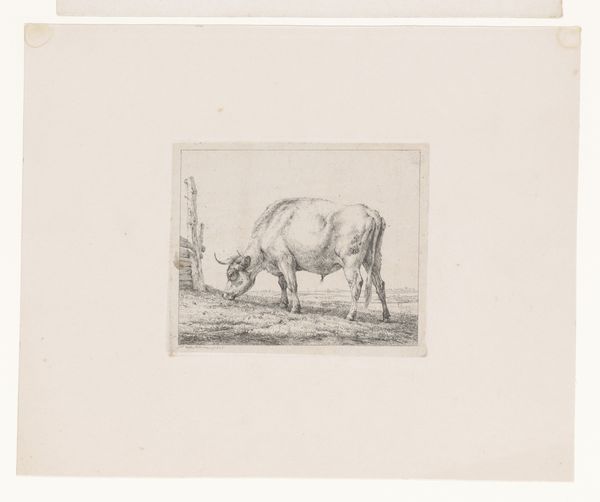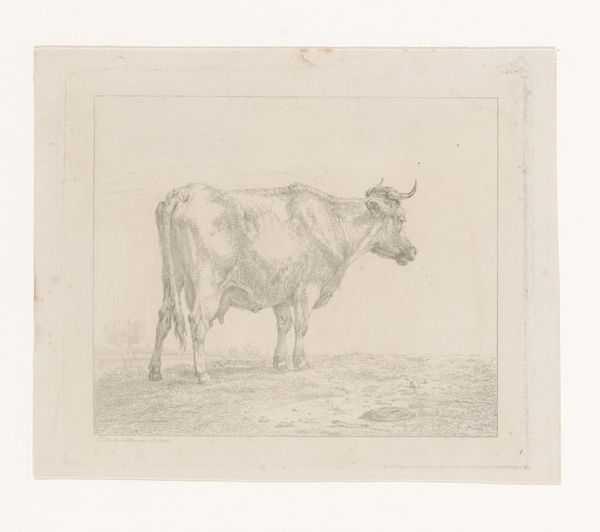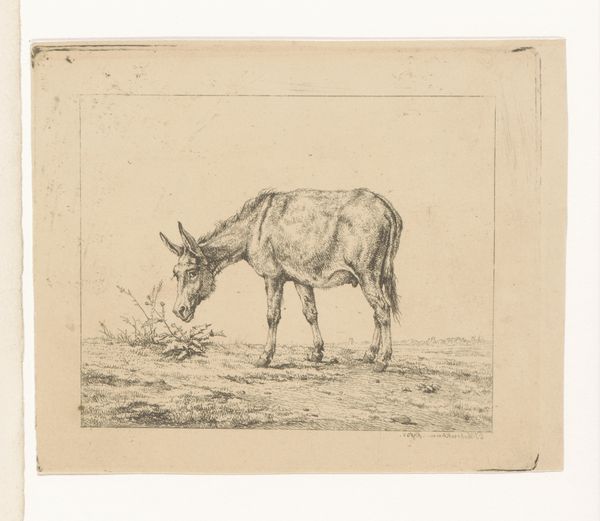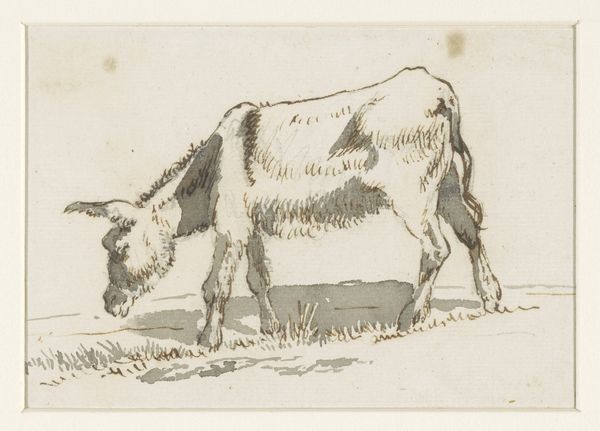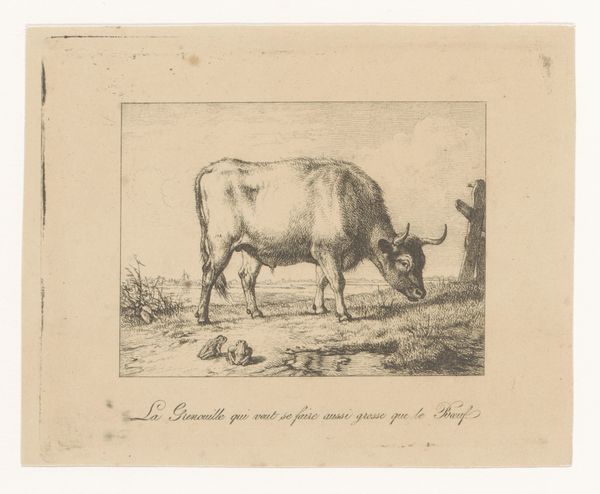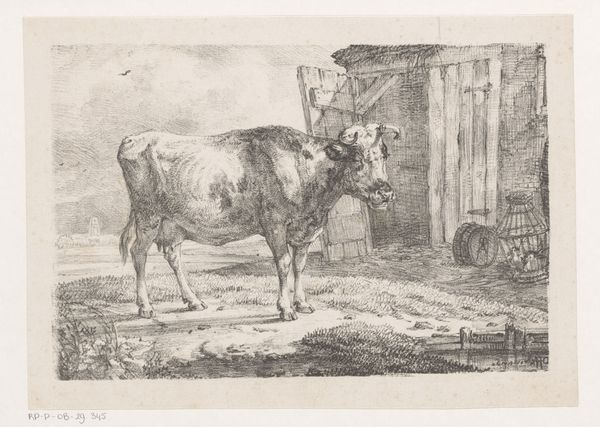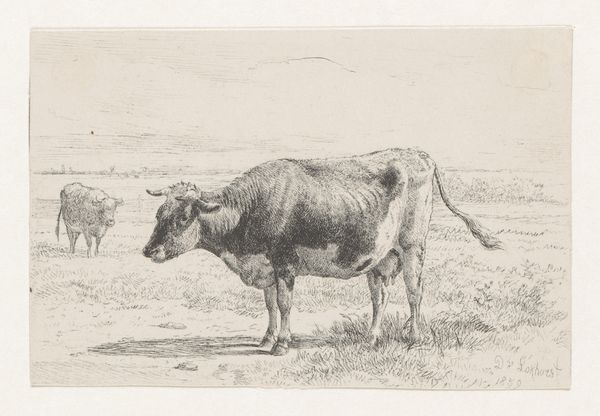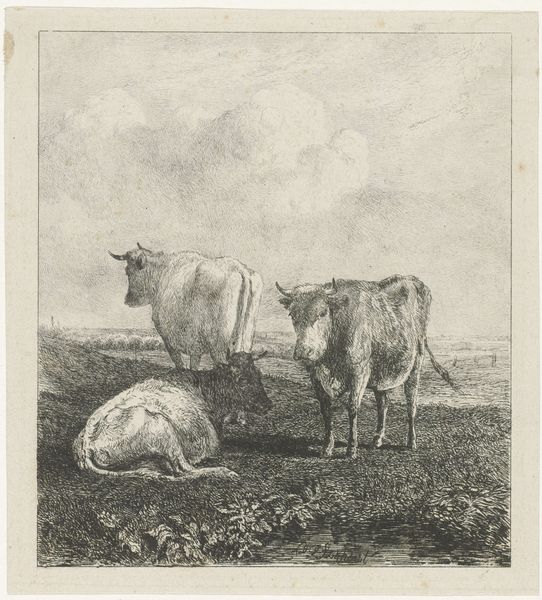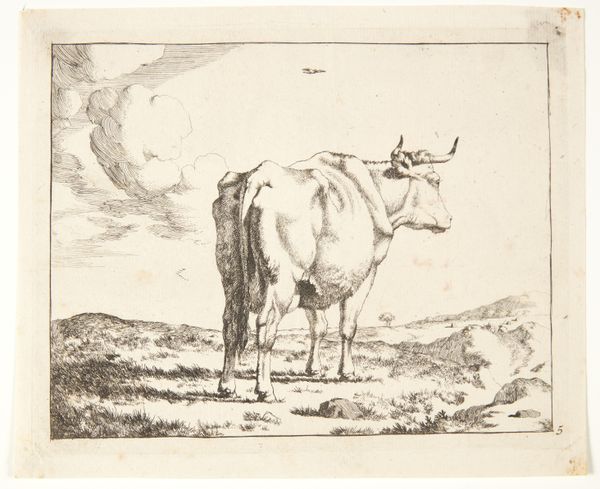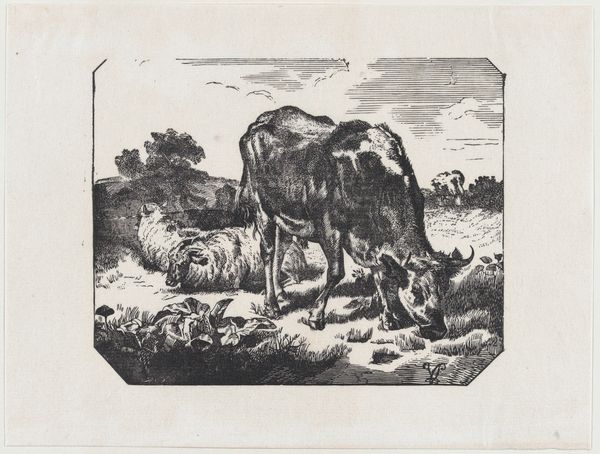
drawing, pencil
#
pencil drawn
#
drawing
#
landscape
#
pencil drawing
#
pencil
#
genre-painting
#
realism
Dimensions: height 187 mm, width 197 mm
Copyright: Rijks Museum: Open Domain
Editor: Here we have "Jonge koe," or "Young Cow," by Eugène Verboeckhoven, sometime between 1808 and 1881. It's a pencil drawing, and the detail achieved with just that material is striking. What catches your eye when you look at this work? Curator: I'm interested in the raw, unpretentious materiality of the piece. It's a pencil drawing, yes, but consider the societal role of cattle in 19th-century Netherlands. They represented a key source of livelihood for many farmers, contributing to the economy. Editor: That’s an interesting angle. So you see the drawing itself as a sort of material document reflecting this agricultural reality? Curator: Exactly! Verboeckhoven meticulously depicts the texture of the cow's coat, the way it interacts with the earth...it speaks volumes about the labor and materials that defined the era. How might the consumption of dairy products impact Verboeckhoven's artmaking practices? Editor: I see your point. It’s not just a pretty picture of a cow; it's linked to broader systems of production and consumption. But doesn’t that connection feel a bit...tenuous? Is that reaching a little too much? Curator: Perhaps. Yet by focusing on the drawing’s materiality, we can begin to consider broader socioeconomic dimensions that shaped both the artwork and its original viewers' lives. Do we then still see this as simply just art, or something else entirely? Editor: I suppose thinking about art as embedded within larger material networks helps to expand our understanding and appreciation of the work itself. I hadn’t considered it that way before. Curator: Precisely! The seemingly humble materials of art – in this case, a pencil and paper – are tied to vast structures.
Comments
No comments
Be the first to comment and join the conversation on the ultimate creative platform.
